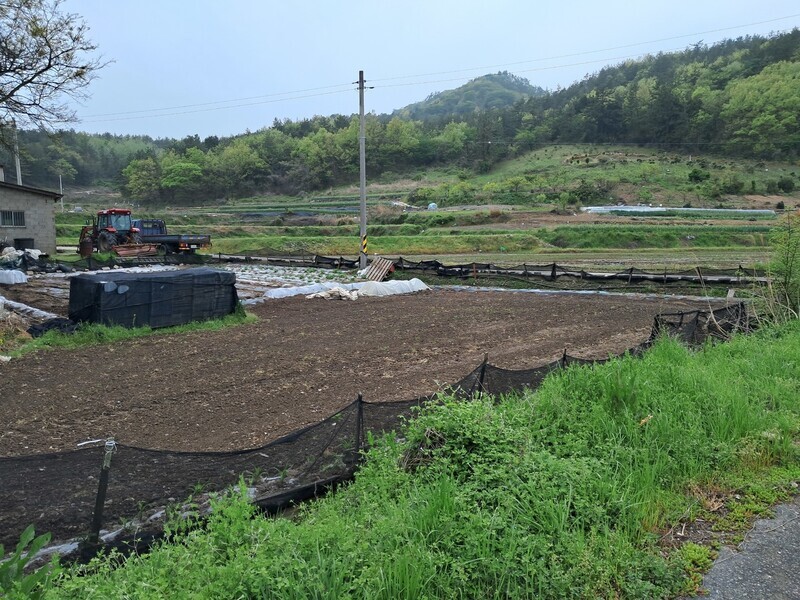hankyoreh
Links to other country sites 다른 나라 사이트 링크
Under conservative chief, Korea’s TRC brands teenage wartime massacre victims as traitors

These so-called assassins were only 13 and 14 years old.
The Hankyoreh has confirmed that many of those executed in civilian massacres in the Jindo area during the Korean War, whose recognition as victims of state violence was postponed by the Truth and Reconciliation Commission due to being classified as “collaborators with enemy forces” — that is, North Korea — were actually preteens and young teens.
Since Kim Kwang-dong took over as chairperson in December 2022, the commission, which was established to shed light on state violence including mass civilian deaths during the Korean War and to foster national unity, has taken a firm stance that collaborators will not be recognized as victims of massacres. This position has led the commission to focus intensively on exposing the deceased’s supposedly unsavory affiliations, sparking criticism for its efforts to justify the wartime summary executions of even minors who had been labeled as members of death squads.
Through meetings with the families of the victims on April 17-18 in the rural village of Mangil in the province’s Jindo County, the Hankyoreh confirmed that three of the four individuals discussed at the 74th full meeting of the Truth and Reconciliation Commission on March 12 were teenagers. These four were victims of the so-called "Jindo Incident," a civilian massacre perpetrated by police and military forces in Jindo.
The commission initially proposed that these individuals could not be recognized as victims, but the decision was postponed due to opposition from commissioners nominated by the opposition party.
The decision to postpone the verification of these four victims was heavily influenced by “anti-communist” surveillance records from 1969 compiled by the Jindo Police Station.
A number of kids who were under the age of 15 were labeled as “assassins” for far-left factions during the war. Authorities falsified their ages to be around 19 to 20.
The Hankyoreh’s investigations revealed that among these four persons, Heo Hun-ok was only 14 when he was killed in 1950. He was in his first year at middle school. His younger brother Gyeong-ok, 87, met with the Hankyoreh at a cafe in Jangseong County, South Jeolla Province, on April 18.
“My brother was in his first year at Jindo Middle School. I was in my sixth year at Uisin Elementary School. We were only one year apart, so we were like best friends,” he said.
According to birth records, Heo was born in 1936.
In 1969, Jindo Police Station filed Heo’s death as the result of an anti-communist campaign, writing that the 14-year-old was an “assassin.” That is, Heo was executed for supposedly collaborating with North Korean forces. The police incorrectly registered Heo’s age as 19.

Kim Dae-hwan and Heo Jang-o are two more teens whose victimhood is being debated because of records stating that they were assassins. The boys were 13 and 17 years old, respectively. The police recorded both of their ages as 20 years old. Kim had been pulled out of school, and worked with his father and brother fishing. Heo Jang-o was in middle school.
“These police documents were filed during a time when the guilt-by-association system was in place. Family activities were often recorded as justifications for surveillance, but there’s a high chance that these records were falsified. To view these records as historical fact [without additional proof] goes against common sense,” said Kim Ik-han, a professor emeritus at Myongji University who specializes in the study of historical records.
Some within the truth-seeking commission have said the framing of victims as traitors amounts to secondary victimization.
By Koh Kyoung-tae, senior staff writer
Please direct questions or comments to [english@hani.co.kr]

Editorial・opinion
![[Editorial] Intensifying US-China rivalry means Seoul must address uncertainty with Beijing sooner than later [Editorial] Intensifying US-China rivalry means Seoul must address uncertainty with Beijing sooner than later](https://flexible.img.hani.co.kr/flexible/normal/500/300/imgdb/original/2024/0517/8117159322045222.jpg) [Editorial] Intensifying US-China rivalry means Seoul must address uncertainty with Beijing sooner than later
[Editorial] Intensifying US-China rivalry means Seoul must address uncertainty with Beijing sooner than later![[Column] When ‘fairness’ means hate and violence [Column] When ‘fairness’ means hate and violence](https://flexible.img.hani.co.kr/flexible/normal/500/300/imgdb/original/2024/0516/7417158465908824.jpg) [Column] When ‘fairness’ means hate and violence
[Column] When ‘fairness’ means hate and violence- [Editorial] Yoon must stop abusing authority to shield himself from investigation
- [Column] US troop withdrawal from Korea could be the Acheson Line all over
- [Column] How to win back readers who’ve turned to YouTube for news
- [Column] Welcome to the president’s pity party
- [Editorial] Korea must respond firmly to Japan’s attempt to usurp Line
- [Editorial] Transfers of prosecutors investigating Korea’s first lady send chilling message
- [Column] Will Seoul’s ties with Moscow really recover on their own?
- [Column] Samsung’s ‘lost decade’ and Lee Jae-yong’s mismatched chopsticks
Most viewed articles
- 1[Editorial] Transfers of prosecutors investigating Korea’s first lady send chilling message
- 2[Column] US troop withdrawal from Korea could be the Acheson Line all over
- 3Xi, Putin ‘oppose acts of military intimidation’ against N. Korea by US in joint statement
- 4[Editorial] Intensifying US-China rivalry means Seoul must address uncertainty with Beijing sooner t
- 5[Exclusive] Unearthed memo suggests Gwangju Uprising missing may have been cremated
- 6‘Shot, stabbed, piled on a truck’: Mystery of missing dead at Gwangju Prison
- 7[Column] When ‘fairness’ means hate and violence
- 8China calls US tariffs ‘madness,’ warns of full-on trade conflict
- 9[Editorial] Yoon must stop abusing authority to shield himself from investigation
- 10China, Russia put foot down on US moves in Asia, ratchet up solidarity with N. Korea